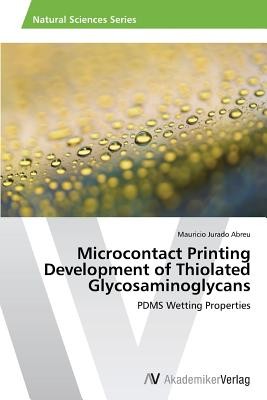
- We will send in 10–14 business days.
- Author: Jurado Abreu Mauricio
- Publisher: AV Akademikerverlag
- Year: 2014
- Pages: 68
- ISBN-10: 3639725670
- ISBN-13: 9783639725674
- Format: 15.2 x 22.9 x 0.4 cm, minkšti viršeliai
- Language: English
- SAVE -10% with code: EXTRA
Microcontact Printing Development of Thiolated Glycosaminoglycans (e-book) (used book) | bookbook.eu
Reviews
Description
It is shown that cells interact with glycosaminoglycans (GAGs) to regulate their own growth, adhesion and motility. Fibroblast seeding on immobilized hyaluronic acid derivatives upon amino and vinyl terminated surfaces reveal such mechanisms. Additionally, in vitro cell dynamics depend on surface chemistry and topography which also influence biocompatibility. The purpose of this work is to develop a microcontact printing approach to immobilize patterns of thiolated hyaluronic acid (t-HA) and thiolated chondroitin sulphate (t-CS) upon vinyl terminated glass by means of a functionalized elastomeric stamp (PDMS; polydimethylsiloxane); printing of native hyaluronic (HA) on amino terminated glass is also included.
EXTRA 10 % discount with code: EXTRA
The promotion ends in 22d.08:19:18
The discount code is valid when purchasing from 10 €. Discounts do not stack.
- Author: Jurado Abreu Mauricio
- Publisher: AV Akademikerverlag
- Year: 2014
- Pages: 68
- ISBN-10: 3639725670
- ISBN-13: 9783639725674
- Format: 15.2 x 22.9 x 0.4 cm, minkšti viršeliai
- Language: English English
It is shown that cells interact with glycosaminoglycans (GAGs) to regulate their own growth, adhesion and motility. Fibroblast seeding on immobilized hyaluronic acid derivatives upon amino and vinyl terminated surfaces reveal such mechanisms. Additionally, in vitro cell dynamics depend on surface chemistry and topography which also influence biocompatibility. The purpose of this work is to develop a microcontact printing approach to immobilize patterns of thiolated hyaluronic acid (t-HA) and thiolated chondroitin sulphate (t-CS) upon vinyl terminated glass by means of a functionalized elastomeric stamp (PDMS; polydimethylsiloxane); printing of native hyaluronic (HA) on amino terminated glass is also included.


Reviews